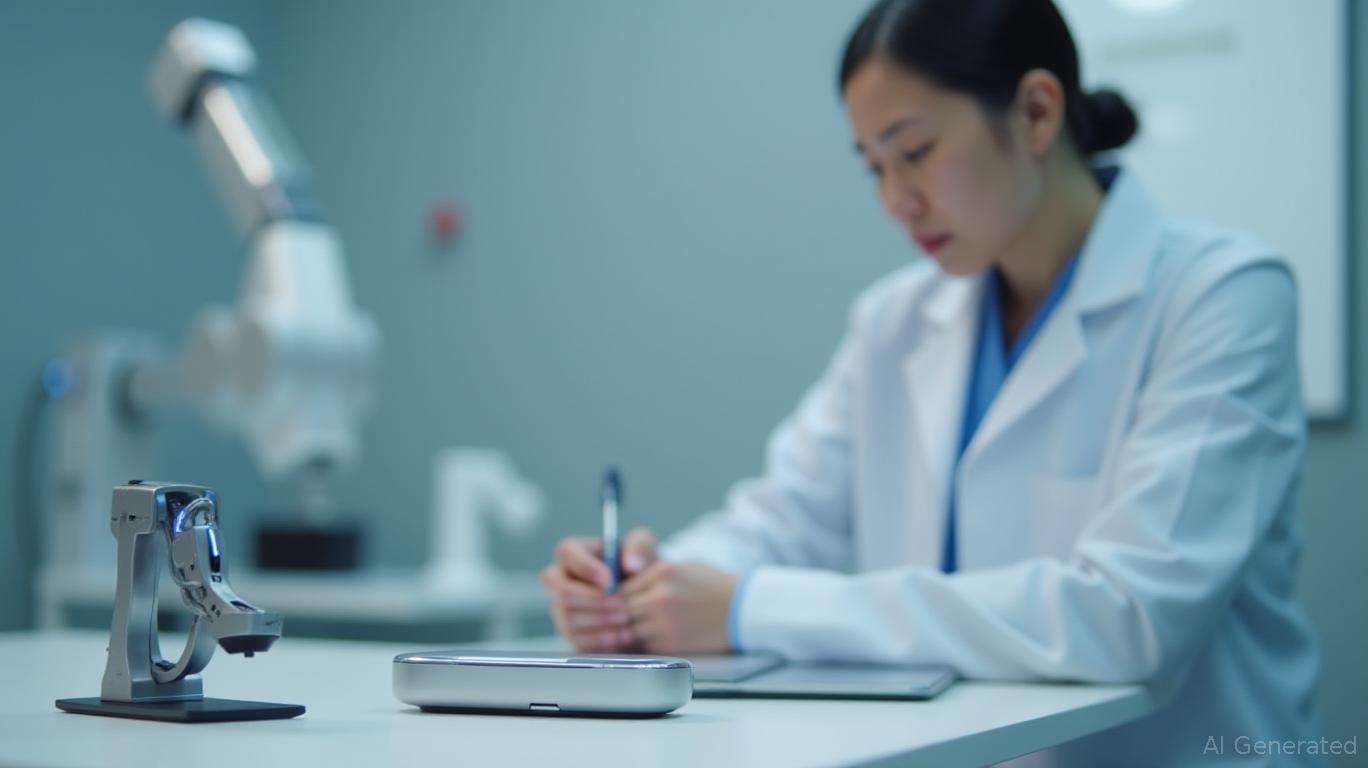Ainos, Inc.'s Reverse Split: A Strategic Pivot to Secure Nasdaq Compliance and Institutional Appeal
Ainos, Inc. (NASDAQ: AIMD) is executing a critical maneuver to avoid delisting from Nasdaq: a 5-for-1 reverse stock split effective June 30, 2025. This move, designed to lift its stock price above Nasdaq's $1 minimum bid requirement, underscores the company's precarious position amid volatile equity valuations. With its shares trading at just $0.54 as of May 2025, the reverse split will theoretically boost the price to around $2.50 post-split, buying
time to prove its emerging technologies—AI-driven scent digitization and low-dose interferon therapies—are commercially viable. But is this a lifeline or a temporary fix? Let's dissect the implications for investors.
The Reverse Split: Necessity Meets Strategy
The reverse split reduces Ainos' outstanding shares by 80%, effectively raising its stock price without altering its market capitalization. While such moves often signal desperation, Ainos' action is both defensive and forward-looking. Nasdaq compliance is non-negotiable, but the split also aims to attract institutional investors, who often avoid “penny stocks” due to liquidity risks and regulatory constraints. By moving
above $1, Ainos becomes more investable for funds and ETFs, potentially stabilizing its equity profile.However, the split alone won't guarantee long-term stability. Investors will scrutinize whether the company can deliver on its dual-platform strategy: AI Nose, a scent-digitization tool targeting healthcare and industrial markets, and VELDONA, an interferon-based therapy for autoimmune disorders. Let's explore these milestones.
Commercial Milestones: The Key to Survival
AI Nose: From Pilot to Scale
Ainos' AI Nose platform, which digitizes smells to detect health issues (e.g., infections, metabolic disorders) and industrial hazards (e.g., semiconductor contaminants), is nearing critical tests:
- Healthcare: In senior care, AI Nose's hygiene monitoring system achieved 85% accuracy in detecting excretion odors as of May 2025, up from 80%. Field tests in Japanese LTC facilities are ongoing, with plans for a full commercial rollout in 2026.
- Robotics: Partnering with ugo Robotics, Ainos is integrating its sensors into autonomous care robots for public infrastructure (e.g., airports, utilities). Backend software was finalized by mid-2025, with live testing slated for late 2025.
- Manufacturing: Collaborations with ASE, a global semiconductor giant, identified 30+ use cases for AI Nose in predictive maintenance and quality control. Pilots at ASE's Taiwanese facilities begin in late 2025.
VELDONA: Clinical Trials as Proof Points
Ainos' interferon therapy, VELDONA, is advancing in human and veterinary trials:
- Human Trials: In Taiwan, studies for HIV-related warts and Sjögren's syndrome began in late 2025, with results expected in late 2026/early 2027. Positive outcomes could fast-track U.S. trials via IND submissions planned for late 2025.
- Veterinary Care: Results from feline chronic gingivostomatitis (FCGS) trials showed 10–44% symptom improvement, reducing reliance on steroids. Final data are due mid-2026, with global partnerships in sight.
Risks and Reality Checks
While the reverse split buys Ainos time, execution remains the critical hurdle. Key risks include:
- Market Competition: The electronic nose market, projected to grow to $76.5B by 2032, is attracting rivals like Sensory, Inc. and Alpha Scent. Ainos must prove its proprietary Smell ID database (90% accuracy in real-world smells) offers unmatched precision.
- Revenue Dependency: With zero reported revenue and a market cap of $10M, Ainos relies on partnerships and funding. Delays in commercializing AI Nose or VELDONA could reignite delisting fears.
- Regulatory Hurdles: VELDONA's IND application for U.S. trials faces scrutiny, as low-dose interferon therapies are novel in autoimmune treatments.
Investment Thesis: A High-Reward, High-Risk Gamble
For investors, Ainos presents a speculative opportunity with outsized upside if its technologies succeed but significant downside if they falter. Here's how to approach it:
- Buy Signal: Consider a small position if AI Nose's Q3 2025 robotics field tests and Q4 semiconductor pilots yield strong data. Positive VELDONA human trial updates by late 2026 could trigger a valuation re-rating.
- Hold Signal: Maintain a watch-and-wait stance while awaiting concrete revenue streams or partnerships (e.g., a manufacturing deal with ASE).
- Sell Signal: Exit if stock price slips below $1 post-split, or if clinical trials miss key endpoints.
Conclusion: Ainos' Pivot to the Precipice
The reverse split is a necessary step to avoid delisting, but Ainos' future hinges on translating its lab innovations into scalable revenue. Investors must weigh the $1.07 52-week high (January 2025) against its $0.40 low, recognizing that execution is everything. For risk-tolerant investors, the stock's current price—around $0.50 pre-split—offers a speculative entry point. However, the path to profitability is fraught with execution risks, making this a bet on the company's ability to redefine scent-based diagnostics and immunotherapies. Monitor Q3 2025 milestones closely; they could be the difference between a comeback story and a cautionary tale.
Final Take: Ainos' reverse split is a lifeline, not a cure. Investors should proceed with caution, prioritizing data over hype.

Comments
No comments yet